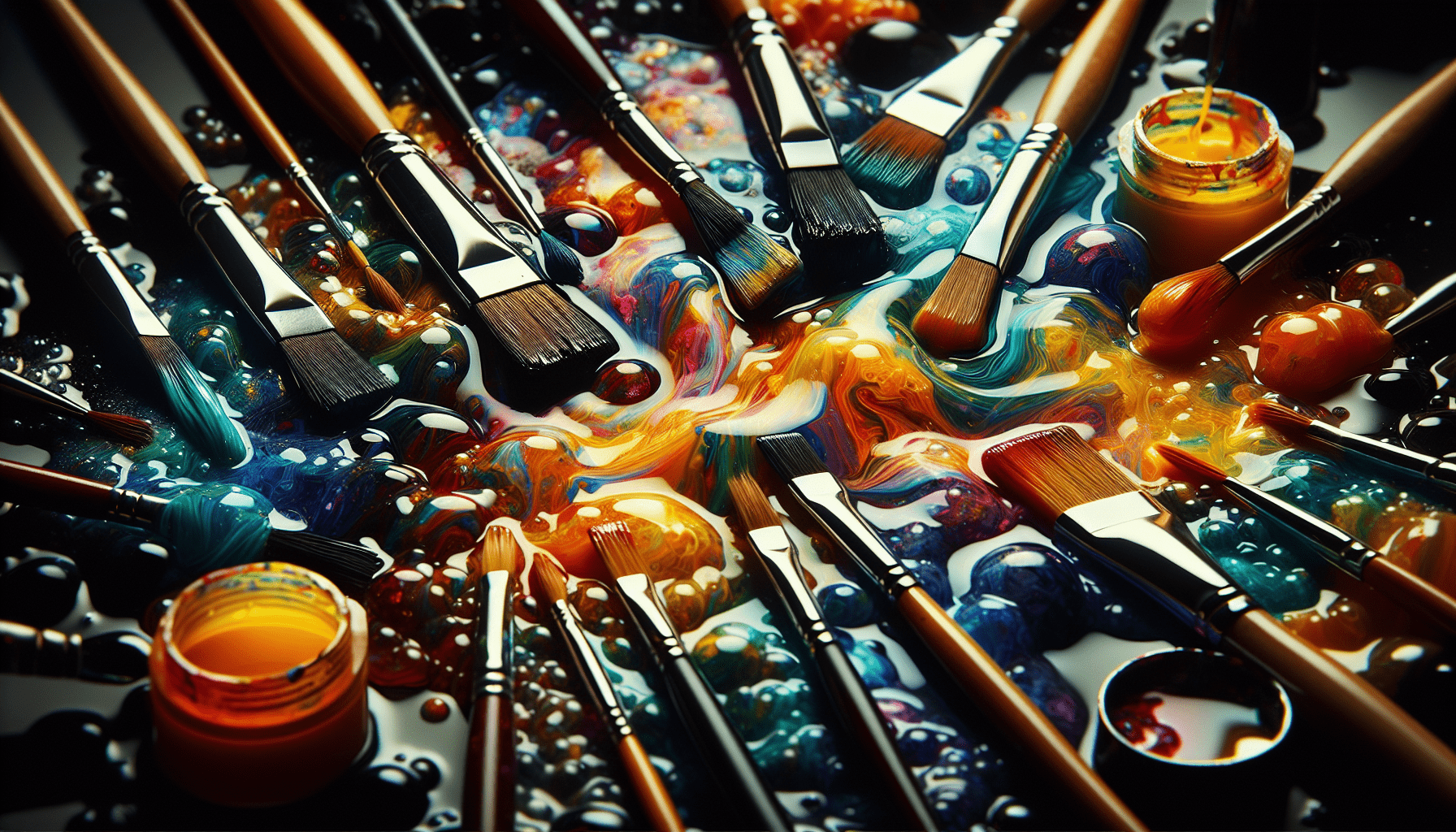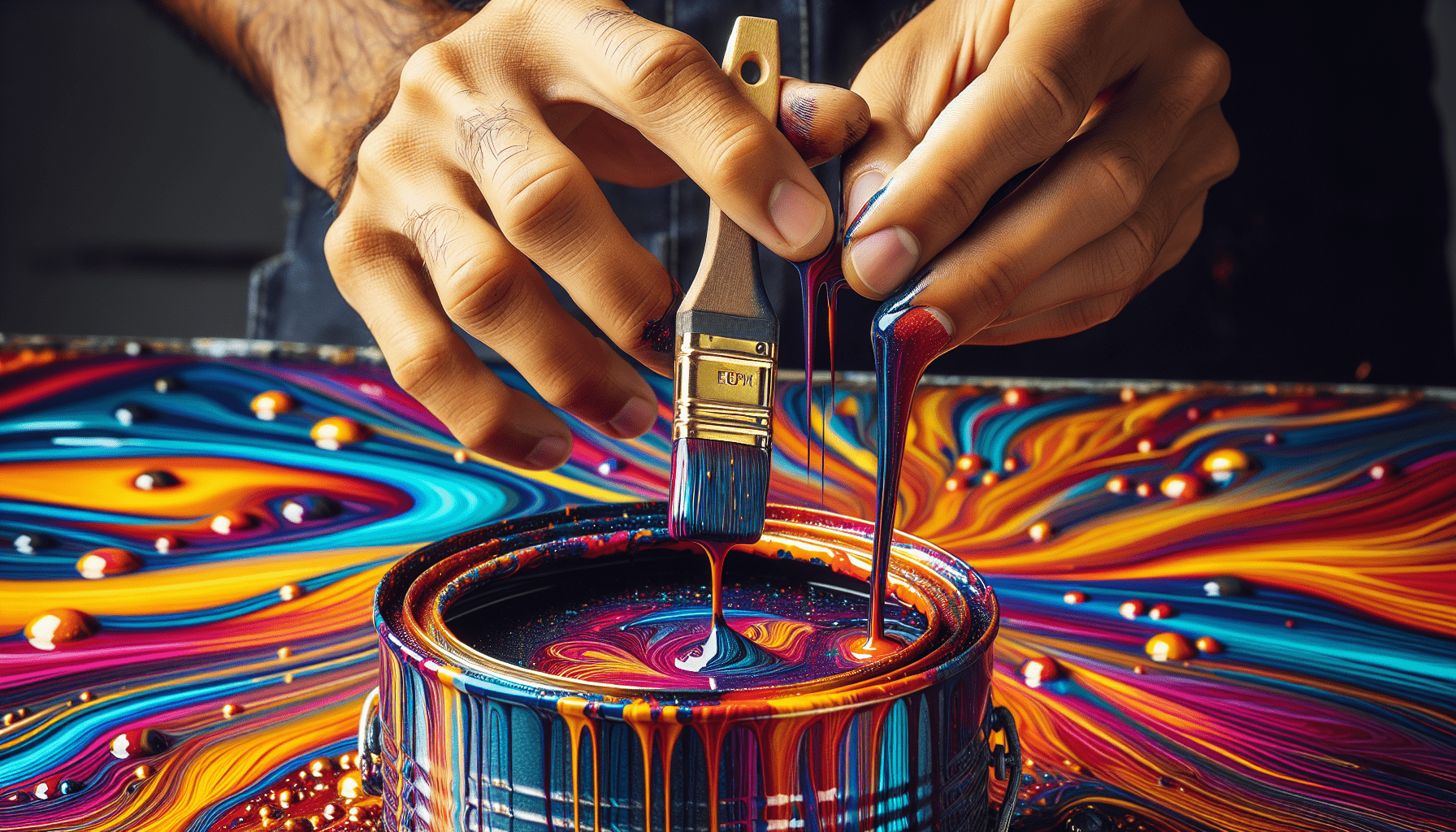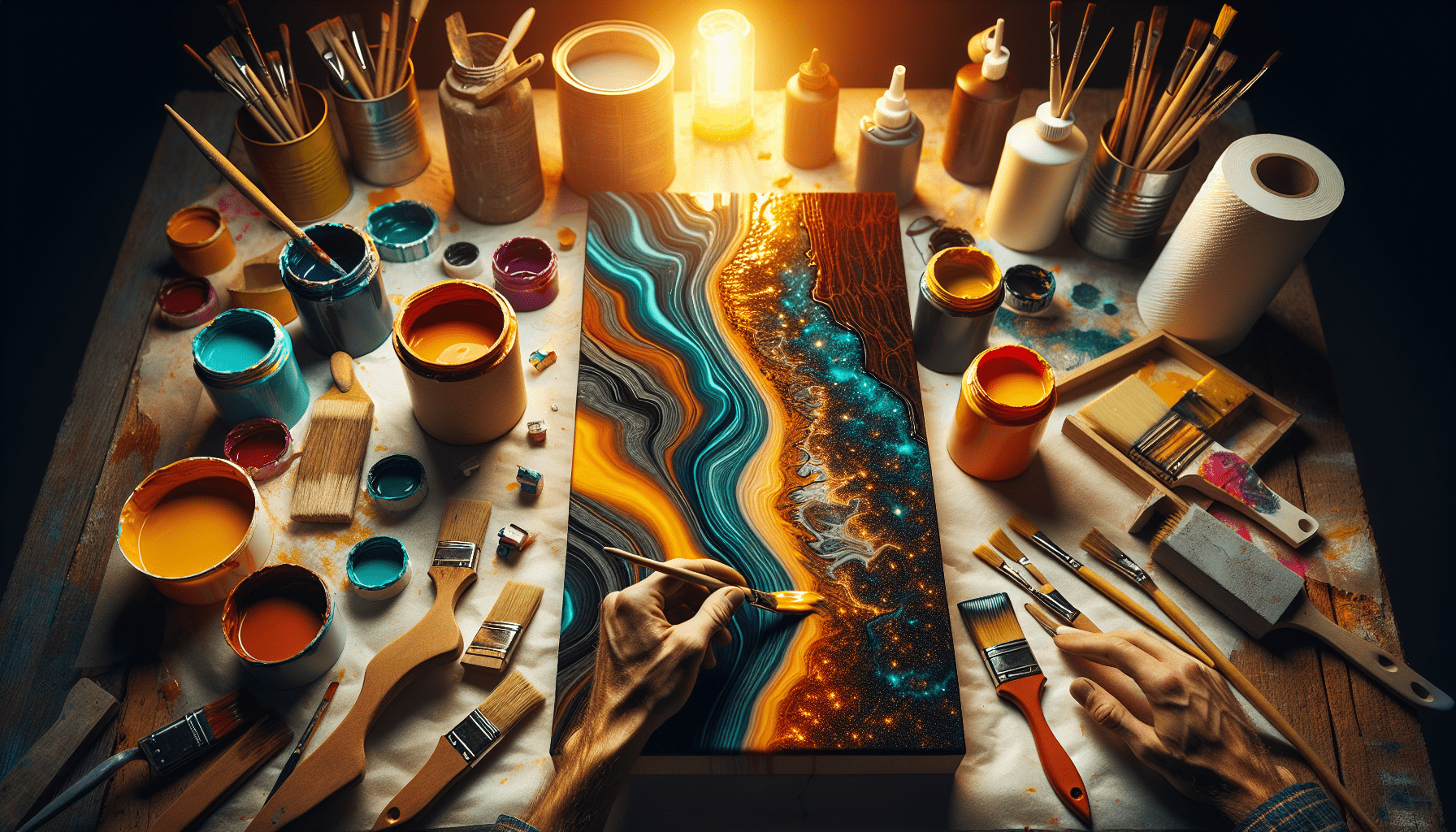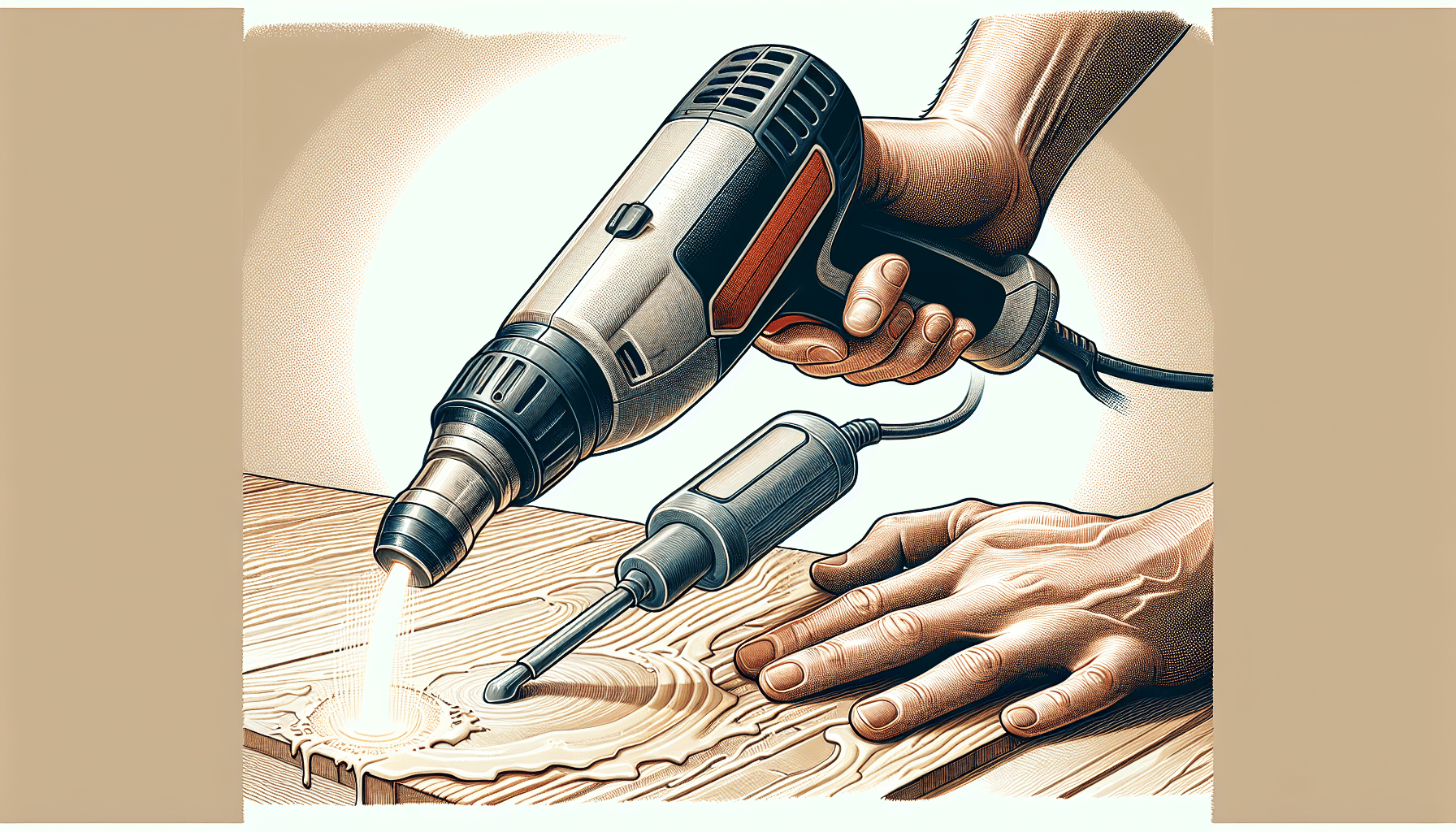When it comes to working with epoxy resin, choosing the right type of paint to mix with it can make all the difference in achieving the desired result. Whether you are a professional artist or a DIY enthusiast, understanding which paints are compatible with epoxy resin is essential. In this article, we will explore various types of paints that can be seamlessly mixed with epoxy resin, highlighting their unique properties and the stunning effects they can create. Discover the perfect paint to enhance and elevate your resin projects to new levels of creativity and craftsmanship.
Acrylic Paint
Overview
Acrylic paint is a versatile and popular medium used by artists, hobbyists, and craftsmen alike. Known for its quick-drying properties and vibrant colors, acrylic paint is a fantastic choice for mixing with epoxy resin. Whether you want to create stunning resin art or add color to your epoxy resin projects, acrylic paint can be easily incorporated to achieve desired effects.
Compatibility with Epoxy Resin
Acrylic paint is fully compatible with epoxy resin. This means that when mixed together, they will bond well and create a smooth, consistent mixture. The resin acts as a binder, encapsulating the paint particles and helping to preserve their color and texture. However, it is important to use high-quality acrylic paint to ensure the best results. Lower-quality paints may contain additives or fillers that can affect the curing process and overall quality of the resin.
Tips for Mixing Acrylic Paint with Epoxy Resin
- Choose high-quality acrylic paint: Opt for professional-grade acrylic paint that is specifically formulated for artists. These paints have a higher pigment concentration, ensuring vibrant colors and better mixing results.
- Mix in small quantities: To achieve the desired color and consistency, start by adding a small amount of acrylic paint to the epoxy resin mixture. You can gradually add more paint as needed.
- Stir thoroughly: Use a stir stick or wooden spatula to gently mix the acrylic paint and epoxy resin together. Make sure to scrape the sides and bottom of the container to ensure even distribution of the paint particles.
- Experiment with different colors and effects: Acrylic paint offers a wide range of colors, shades, and finishes. Feel free to experiment with different combinations to create unique effects in your epoxy resin projects.
- Allow for proper curing time: Once the epoxy resin and acrylic paint are mixed, it is important to allow sufficient curing time. Follow the instructions provided by the manufacturer of the epoxy resin and ensure proper ventilation during the curing process.
Oil Paint
Overview
Oil paint is a traditional and well-loved medium among artists for its rich colors, depth, and ability to blend smoothly. While oil paint and epoxy resin may seem like an unlikely pairing, they can actually work together to create interesting effects and textures in resin art and other projects.
Compatibility with Epoxy Resin
Oil paint and epoxy resin can be mixed together, but there are a few considerations to keep in mind. Epoxy resin is a reactive material that requires proper curing, and oil paint contains linseed oil which can inhibit the curing process. However, by taking certain precautions, you can successfully mix oil paint with epoxy resin.
Tips for Mixing Oil Paint with Epoxy Resin
- Use a minimal amount of oil paint: Since oil paint contains linseed oil, it is important to use it sparingly when mixing it with epoxy resin. Adding too much oil paint can interfere with the curing process and result in a sticky or tacky finish.
- Mix thoroughly and quickly: Oil paint tends to settle and separate, so it’s important to mix it thoroughly and quickly with the epoxy resin. Use a stir stick or wooden spatula to blend the paint and resin together, ensuring even distribution.
- Allow for proper curing time: The presence of oil paint in the epoxy resin mixture may slightly extend the curing time. Follow the manufacturer’s instructions for the specific epoxy resin you are using and make sure to allow sufficient time for the resin to fully cure.
- Consider using fast-drying oils: If you want to minimize the risk of interfering with the epoxy resin curing process, consider using fast-drying oil paints. These paints contain additives that accelerate the drying time and can be mixed more easily with epoxy resin.
Watercolor Paint
Overview
Watercolor paint is beloved for its transparency, delicate washes, and luminosity. It may not be the most common choice for mixing with epoxy resin, but it can be a wonderful way to incorporate subtle color effects into your resin art and projects.
Compatibility with Epoxy Resin
Watercolor paint is generally not recommended for direct mixing with epoxy resin. Unlike acrylic or oil paints, watercolor paint is water-based and contains pigments that are not designed to bond with the epoxy resin. Mixing watercolor paint with epoxy resin may result in poor adhesion, uneven coloring, or even the paint separating from the resin.
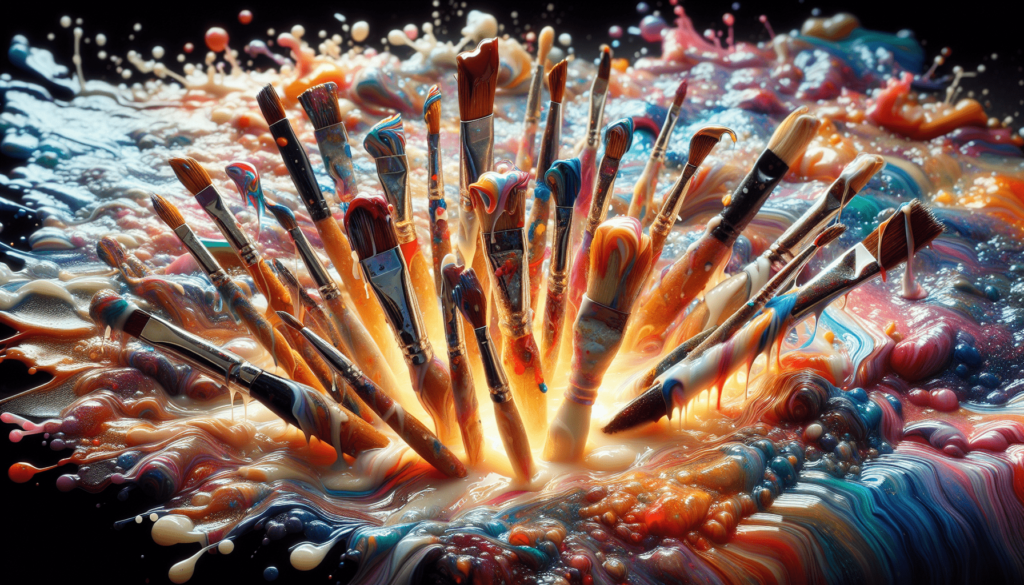
Tips for Mixing Watercolor Paint with Epoxy Resin
- Use watercolor pencils or markers: Instead of mixing watercolor paint directly with epoxy resin, consider using watercolor pencils or markers to add color to your resin art. These water-soluble art supplies can be used to create intricate designs or add subtle details to your resin projects.
- Apply a protective sealant: If you still wish to incorporate watercolor paint into your epoxy resin projects, apply a protective sealant over the paint before pouring the resin. This will help to protect the watercolor paint from reacting with the resin and prevent any color bleeding.
- Experiment with watercolor paper or prints: Another option is to use watercolor paper or prints as a background or layer in your resin art. This allows you to showcase the beauty of watercolor without directly mixing it with epoxy resin. Seal the watercolor paper or print with a clear varnish or sealant before applying the resin.
Alcohol Ink
Overview
Alcohol ink is a vibrant, dye-based medium that creates stunning abstract effects when used in various art forms. Mixing alcohol ink with epoxy resin can yield mesmerizing results, adding depth, movement, and vibrant colors to your resin projects.
Compatibility with Epoxy Resin
Alcohol ink is highly compatible with epoxy resin. When combined, the resin acts as a binder, encapsulating the ink pigments and creating a beautiful, translucent effect. The alcohol in the ink evaporates quickly, allowing the resin to cure properly without interference.
Tips for Mixing Alcohol Ink with Epoxy Resin
- Work in a well-ventilated area: Alcohol inks contain solvents that can be volatile, so it’s important to work in a well-ventilated area or wear a respirator mask to protect yourself.
- Use high-quality alcohol inks: To achieve vibrant colors and ensure compatibility with epoxy resin, invest in high-quality alcohol inks. These inks often have higher pigment concentrations and are specifically formulated for artists.
- Experiment with different application techniques: Alcohol ink can be applied in various ways, such as dripping, blowing, or applying with a brush. Explore different techniques to create unique effects and designs in your epoxy resin projects.
- Protect your work surface: Alcohol inks can be unpredictable and may spread or bleed. Use a protective barrier, such as a silicone mat or plastic sheet, to prevent the inks from staining your work surface.
- Allow for proper curing time: After mixing alcohol ink with epoxy resin, allow sufficient curing time as directed by the manufacturer. The resin should cure clear and durable, locking in the vibrant colors of the alcohol ink.
Powdered Pigments
Overview
Powdered pigments, also known as mica powders or colorants, are finely ground pigments that can be mixed with various mediums to create custom colors and effects. When mixed with epoxy resin, powdered pigments can add depth, shimmer, and a metallic or pearlescent finish to your projects.
Compatibility with Epoxy Resin
Powdered pigments are highly compatible with epoxy resin. The fine particles easily disperse in the resin, allowing for even color distribution. They do not interfere with the curing process and can create mesmerizing visual effects when properly mixed with epoxy resin.
Tips for Mixing Powdered Pigments with Epoxy Resin
- Start with a small amount: Begin by adding a small amount of powdered pigment to the epoxy resin mixture. This allows you to control the intensity of the color and gradually add more if desired.
- Mix thoroughly: Use a stir stick or wooden spatula to thoroughly mix the powdered pigment into the epoxy resin. Make sure to scrape the sides and bottom of the container to ensure even distribution.
- Experiment with different ratios and colors: Powdered pigments offer a wide range of colors and effects. Feel free to experiment with different ratios and combinations to achieve your desired color and visual impact.
- Use caution with dark or highly concentrated pigments: Some dark or highly concentrated powdered pigments may require a higher pigment-to-resin ratio, which can potentially compromise the curing process. Start with small amounts and gradually increase as needed while monitoring the resin’s reaction.
Mica Powder
Overview
Mica powder is a type of powdered pigment that consists of finely ground minerals. In addition to providing color, mica powders also create a shimmering effect due to their unique reflective properties. Mixing mica powder with epoxy resin can result in stunning, eye-catching projects with a metallic or pearlescent finish.
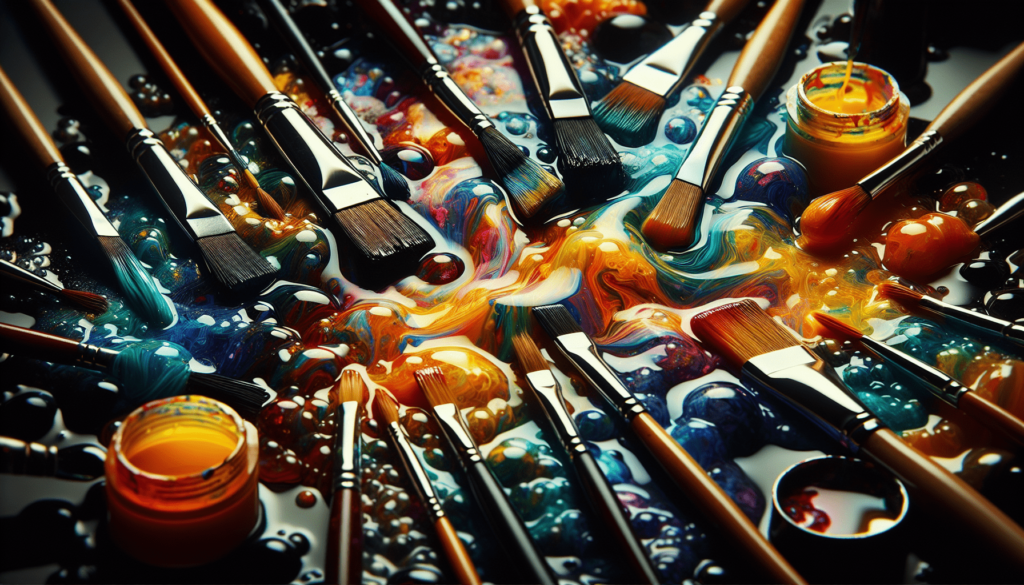
Compatibility with Epoxy Resin
Mica powder is fully compatible with epoxy resin. The tiny mica particles disperse evenly in the resin, enhancing its visual appeal and adding depth to your projects. Whether you’re creating resin jewelry, artwork, or other crafts, mixing mica powder with epoxy resin can yield beautiful results.
Tips for Mixing Mica Powder with Epoxy Resin
- Choose high-quality mica powder: When selecting mica powder, opt for high-quality products specifically formulated for use in arts and crafts. These powders often have a finer particle size and superior color vibrancy.
- Mix in small quantities: Start by adding a small amount of mica powder to the epoxy resin mixture, as a little goes a long way. Gradually add more powder if desired, taking care not to exceed the recommended pigment-to-resin ratio.
- Mix thoroughly: To achieve an even distribution of color and shimmer, thoroughly mix the mica powder into the epoxy resin using a stir stick or wooden spatula. Scrape the sides and bottom of the container to ensure all the powder is incorporated.
- Experiment with layering and blending: Mica powder allows for endless creative possibilities. Try layering different colors or blending them together to achieve unique effects and visual interest in your resin projects.
Epoxy Resin Pastes
Overview
Epoxy resin pastes are pre-mixed epoxy resins that already contain pigments or additives, providing a ready-to-use solution for adding color and texture to your projects. These pastes offer convenience and consistency, making them a popular choice for artists and craftsmen.
Compatibility with Epoxy Resin
Epoxy resin pastes are specifically designed for use with epoxy resin, ensuring excellent compatibility. Since the pigments and additives are already incorporated into the paste, you can simply mix it with the epoxy resin without the need for additional colorants or modifiers.
Tips for Mixing Epoxy Resin Pastes with Epoxy Resin
- Follow the manufacturer’s instructions: Each epoxy resin paste may have specific instructions for mixing, curing time, and recommended pigment-to-resin ratios. Carefully read and follow the instructions provided by the manufacturer to achieve the best results.
- Use a clean and dry stirring tool: To maintain the integrity of the epoxy resin paste and prevent contamination, use a clean and dry stirring tool when mixing it with epoxy resin. Avoid using tools that have been previously used with other paints or materials.
- Mix thoroughly and scrape the container: Epoxy resin pastes, like other paint additives, can settle or separate over time. Make sure to mix the paste and resin thoroughly, scraping the sides and bottom of the container, to ensure a consistent mixture.
- Test and adjust colors if needed: If you’re aiming for a specific color or shade, it’s always a good idea to test a small amount of the mixed epoxy resin paste before applying it to your project. Adjust the color by adding more paste or epoxy resin as needed.
Chalkboard Paint
Overview
Chalkboard paint is a specialty paint that transforms surfaces into a chalkboard-like finish. It is often used in classrooms, offices, and homes to create functional and decorative spaces. Mixing chalkboard paint with epoxy resin can provide a unique and versatile medium for creating chalkboard-inspired resin pieces.
Compatibility with Epoxy Resin
Chalkboard paint can be mixed with epoxy resin, but it’s important to note that the finish may be different from traditional chalkboards. The epoxy resin will give the surface a glossy or polished look, rather than the matte finish typically associated with chalkboards. However, this can create a visually interesting contrast and a durable, functional piece.
Tips for Mixing Chalkboard Paint with Epoxy Resin
- Choose a compatible chalkboard paint: Not all chalkboard paints are suitable for mixing with epoxy resin. Ensure that the chalkboard paint you choose is water-based and compatible with the specific epoxy resin you are using.
- Mix in small quantities: Start with a small amount of chalkboard paint and gradually add more as needed. This allows you to control the color intensity and achieve the desired effect.
- Stir thoroughly: Use a stir stick or wooden spatula to mix the chalkboard paint and epoxy resin thoroughly. Proper mixing ensures even distribution of the paint particles and promotes a consistent color throughout the resin.
- Apply multiple layers if desired: If you want a more opaque or solid chalkboard-like finish, consider applying multiple layers of the mixed epoxy resin and chalkboard paint. Allow each layer to cure properly before applying the next.
- Follow the manufacturer’s instructions: Always refer to the manufacturer’s instructions for both the chalkboard paint and epoxy resin. Follow the recommended curing time and any specific guidelines to achieve the best results.
Spray Paint
Overview
Spray paint is a popular choice for quick and even application on a variety of surfaces. It is available in a wide range of colors and finishes, making it a versatile and convenient option for adding color to your projects. Mixing spray paint with epoxy resin can create unique effects and allow for creative experimentation.
Compatibility with Epoxy Resin
Spray paint can be mixed with epoxy resin, but it’s important to be cautious and follow specific guidelines. Some spray paints contain solvents or additives that may react with the epoxy resin and affect its curing or adhesion properties. Always check the compatibility of the spray paint with the specific epoxy resin you are using.
Tips for Mixing Spray Paint with Epoxy Resin
- Select compatible spray paint: Choose spray paint that is specifically labeled as “compatible with epoxy resin” or “suitable for use with epoxy resin.” This ensures that the spray paint is formulated to minimize any adverse effects when mixed with epoxy resin.
- Test for compatibility: Before mixing large quantities of spray paint and epoxy resin, conduct a small test by applying a thin layer of the mixed materials on a separate surface. Allow it to fully cure and inspect for any signs of adhesion or curing issues.
- Mix in small amounts: Start by adding a small amount of spray paint to the epoxy resin mixture and gradually increase as needed. This allows you to control the color intensity and avoid overloading the mixture with spray paint.
- Stir gently: When mixing spray paint and epoxy resin, stir gently to minimize the introduction of air bubbles. Air bubbles can interfere with the curing process and affect the overall appearance of the finished piece.
- Follow the manufacturer’s instructions: Follow the instructions provided by the manufacturer of both the spray paint and epoxy resin. Adhere to recommended curing times, precautions, and any specific guidelines to achieve the best outcome.
Glow-in-the-Dark Paint
Overview
Glow-in-the-dark paint is a unique and fun medium that emits light after being exposed to a light source. Mixing glow-in-the-dark paint with epoxy resin can create captivating resin pieces that glow in the dark, providing an element of surprise and enchantment.
Compatibility with Epoxy Resin
Glow-in-the-dark paint is generally compatible with epoxy resin and can be mixed together to create mesmerizing effects. The paint particles are often suspended in a clear medium, allowing the epoxy resin to encapsulate them and enhance their luminescent properties. However, it’s essential to use glow-in-the-dark paint specifically designed for mixing with epoxy resin for optimal results.
Tips for Mixing Glow-in-the-Dark Paint with Epoxy Resin
- Choose quality glow-in-the-dark paint: Ensure that you select high-quality glow-in-the-dark paint that is formulated for mixing with epoxy resin. These paints are specially designed to maintain their glow properties when combined with the resin.
- Mix thoroughly: To achieve an even distribution of the glow-in-the-dark particles, mix the paint and epoxy resin thoroughly. Use a stir stick or wooden spatula, and scrape the sides and bottom of the container to ensure all the particles are incorporated.
- Charge up the glow: Before experiencing the glow-in-the-dark effect, the paint needs to be “charged” by exposing it to a light source. Ensure that you expose the resin piece to sufficient light for the recommended amount of time to achieve the best glow effect.
- Experiment with layering: Consider layering the glow-in-the-dark paint with other colors or effects to create dimension and unique designs in your resin projects. Apply layers of epoxy resin in between to create depth and showcase the glowing properties.
- Test the glow effect: Before applying the mixed glow-in-the-dark paint to your project, test it on a separate surface to gauge the intensity and duration of the glow. This allows you to make adjustments, if desired, or experiment with different ratios of glow-in-the-dark paint to epoxy resin.
In conclusion, epoxy resin can be successfully mixed with various types of paints, pigments, and colorants to create stunning effects in resin art, crafts, and other projects. While each medium may have its own considerations and compatibility factors, proper mixing techniques and adherence to manufacturer’s instructions can help you achieve the best results. Whether you prefer the versatility of acrylic paint, the richness of oil paint, the transparency of watercolor, or the unique properties of specialized mediums, there is a wide range of options to explore and unleash your creativity with epoxy resin.
